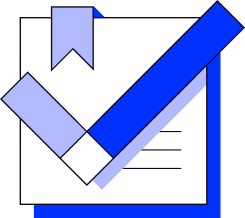
Effizienzsteigerung
RPA-Bots erledigen Aufgaben schneller als Menschen und steigern die Produktivität.

Robotic Process Automation (RPA) ist eine fortschrittliche Technologie, die intelligente Bots erstellt, bereitstellt und dirigiert. Diese Bots können menschliche Aktivitäten nachahmen. Mit dieser Software lassen sich zum Beispiel Kundendaten aus einer Database extrahieren oder automatisch Rechnungen erstellen. RPA kann Bildschirmdaten interpretieren, virtuell Computertastaturen bedienen und virtuos zwischen verschiedenen Systemen navigieren. Die Software lernt aus früheren Aufgaben, passt sich an Veränderungen im Prozess an und verarbeitet sogar unstrukturierte Daten.
RPA optimiert Ihre Geschäftsabläufe und bietet viele Vorteile. Es macht Ihre Arbeit effizienter und genauer.


RPA-Bots erledigen Aufgaben schneller als Menschen und steigern die Produktivität.

RPA minimiert Fehler, indem es menschliche Tätigkeiten verringert.

Die Automatisierung wiederkehrender Aufgaben entlastet Ihre Mitarbeiter, senkt Personalkosten und steigert die Mitarbeiterzufriedenheit.

RPA-Bots arbeiten ohne Pausen und ermöglichen kurze Durchlauf- und Bearbeitungszeiten.

Bots halten sich strikt an Regeln und Protokolle und gewährleisten die Einhaltung von Vorschriften und Standards.

RPA kann sich permanent an veränderte Anforderungen anpassen und ermöglicht maximale Flexibilität.












RPA revolutioniert verschiedene Branchen und Arbeitsplätze aufgrund ihrer Vielseitigkeit und Anpassungsfähigkeit. Im Finanzsektor wird RPA für Aufgaben wie Kreditverarbeitung, Betrugserkennung und Compliance-Berichterstattung eingesetzt. In der Gesundheitsbranche nutzt man sie für das Management von Patientenakten, Terminplanung und Abrechnung. In der Fertigung optimiert RPA Bestandsmanagement und Betriebsabläufe in der Lieferkette. Im Gastgewerbe revolutioniert sie die Reservierungsverwaltung, Gästedienste und Veranstaltungsplanung. Im IT-Bereich kommt RPA bei Aufgaben wie Systemwartung und Berichterstellung zum Einsatz. Selbst im öffentlichen Sektor erfreut sich die Software großer Beliebtheit. Hier vereinfacht RPA die Dateneingabe und -verwaltung, Antragsbearbeitung und administrative Aufgaben und zeigt damit das enorme Potenzial dieser Technologie.
















Robotic Process Automation (RPA) greatly benefits from advancements in Artificial Intelligence (AI). While RPA is excellent at following rules-based processes, AI provides the capability for RPA bots to learn, adapt, and make decisions, enhancing their functionality. AI-powered cognitive capabilities like Natural Language Processing (NLP), Machine Learning (ML), and Computer Vision enable bots to understand and respond to text or voice commands, learn from historical data, and recognize images, respectively. For instance, in customer service, AI-powered RPA can analyze customer sentiments in real-time, allowing bots to handle customer complaints and queries more effectively, delivering personalized responses and improving overall customer experience.
